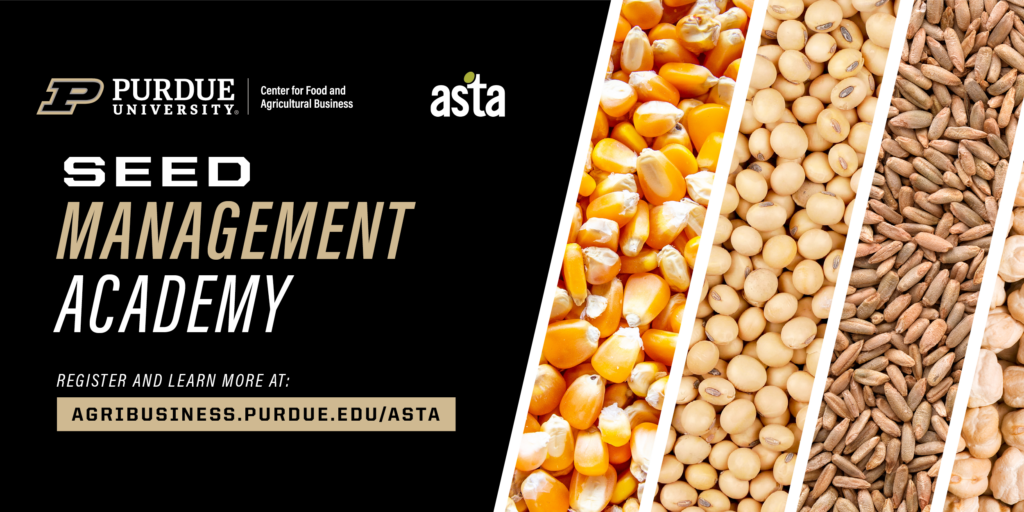 Authors: Dr. Luciano Thomé e Castro, International Affiliated Professor
Authors: Dr. Luciano Thomé e Castro, International Affiliated Professor
Dr. Allan Gray, Professor, Land O’Lakes Chair in Food and Agribusiness, and Executive Director
Dr. Lourival Carmo Monaco Neto, Postdoctoral Research Associate
Ag input retail is a large and dynamic industry that has faced important trends in the last 10 years, some of which have accelerated more recently due to extreme events such as trade wars and harsh weather conditions. In addition, digital innovations such as internet growth and agronomic advancements in precision farming, married with digital technologies, have pushed the industry to modernize. As the cost of collecting data across the value chain went down, new assets and capabilities were demanded from companies in the industry, further deepening this modernization. Finally, the proliferation of alternatives in crop protection and the advancement of seed traits and varieties create a constant dynamic of change for the industry. Of course, the Covid-19 pandemic has also challenged thinking about everything from customer service to supply chain management.
While these different forces have fueled momentum around strategic changes for ag retail businesses, it may seem that “the future has arrived”, but there are certainly still many things yet to come. Websites, platforms, apps, innovative ventures, high-tech capital equipment, sustainability practices and policies are not yet as ready and functional as they could be, but the direction they are going begins to shed some light on how things may come together in the near future.
Below, we have tried to summarize five major strategic changes we believe are on the agenda of major ag retailers and may spark a chain reaction for many more to follow suit. These strategic changes in the industry are certainly a result of external forces, but at the same time, they themselves are drivers of change when we think of their spillover effects. For this exercise, we have limited ourselves to topics directly related to ag retail, but there is a clear relationship between these strategic changes and the changes occurring up or down the supply chain.
- A more horizontally and vertically consolidated industry – Every year, CropLife Magazine releases the Top 100 Retailers Report in the U.S. and their representation in sales. The report also explores some segments in terms of size. The 2020 report showed that the seven largest U.S. retailers have sales above U.S. $1 billion and represent 69% of the total sales in the ranking with a total of U.S. $22 billion, and this has been growing every year. Another sign of consolidation that is less visible due to the lack of official information is the movement by companies to consolidate their operations by investing backwards into input production and producing their own “store” brands to capture some of the margins from the branded products, particularly in crop protection. Others have worked to reduce the classic three-stage distribution systems of manufacturer to wholesaler to retailer to a two-step system where the manufacturer delivers directly to the retailer that manages their own wholesale functions, or in some cases, the wholesaler may actually be moving into retail activity and selling directly to the farmer.
- Efficiency driving management decisions – When a large size is achieved, retailers want to capture the savings coming from operational synergies, powered by more sophisticated means. As the number of competitors diminishes and their size grows, there is also a tendency for fiercer competition in the sector, which in turn creates a need for higher efficiency. For example, Nutrien has announced annual targets of around U.S. $500 million in cost savings through streamlining business processes and improving product logistics. Other retailers are taking advantage of their large equipment fleets and expanded geographies to explore significant potential gains in optimizing equipment and labor usage in custom application. These companies are collaborating with ag tech startups to digitize their information and create algorithms to assist with dispatch and fleet management. Finally, larger organizations can focus on sales effectiveness across regions, helping them exploit their markets and portfolios more rationally.
- The continuous search for relevance with distinct positioning alternatives – While consolidators look for synergies and scale advantages, a robust set of more local and independent companies still exists. This group, instead of rushing to consolidate, decided to focus on local markets and lock-in farmer customers with focused customer intimacy, full-service strategies and by frequently presenting a differentiated branded portfolio as an alternative. The market share for independent retailers has persisted at about 25%. While there is pressure for consolidation, the smaller, independent retailer still has a strong value proposition for a segment of producers.
- Bringing sustainability to the business side of ag retail – Gradually, the conversation around sustainability has gone from stewardship-only to include the potential impact on retailers’ profits. How will the growing implementation of conservation practices by farmers impact the traditional retailers’ business model? Will the shift to a more service-oriented business model be incentivized by a possible higher demand for conservation-related demand? How might carbon credits present an opportunity for retailers for measuring, certifying or simply helping farmers accessing these markets? These are some questions the Center for Food and Agricultural Business has asked farmers and retailers on recurring Large Commercial Producer (LCP) surveys with interesting results. For example, 40% of farmers from the LCP survey said they implement conservation practices recommended by their local retailer, but on the other hand, only 7% of those farmers stated that retailers actively promote conservation practices, showing a clear gap and, likely, an opportunity.
- The construction of omnichannel strategies – While there are certainly segments of farmers that prefer digital-only or brick-and-mortar stores-only for buying ag inputs and interacting with suppliers, results from market research conducted by different institutions seem to signal that a blended and integrated model called omnichannel might become the main choice for the mainstream market. Additionally, players’ movements have shown that rather than focusing only on e-commerce, the use of omnichannel strategies should encompass touchpoints along farmer customers’ journey, including opportunities such as information delivery, agronomic insight generation, and even commodity trading. Two examples that illustrate this trend are the Farmer Business Network investing in a group of salespeople named “Community Builders” and the recent acquisition of CommoditAg, an ag input marketplace, by Farmers Edge, a digital agricultural company.
These five strategic changes are intertwined and are certainly related to transformations coming from farmers, ag input manufacturers, public opinion, government institutions and regulators. The implementation of these changes is creating a new ag retailer and altering the industry’s landscape. It is exciting to imagine that this may be only the beginning.
:




